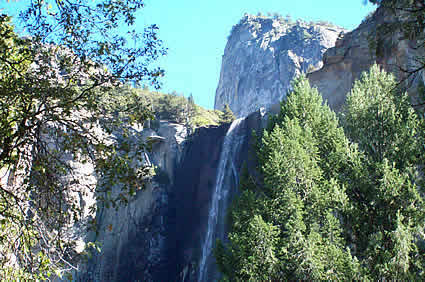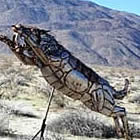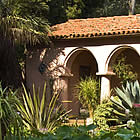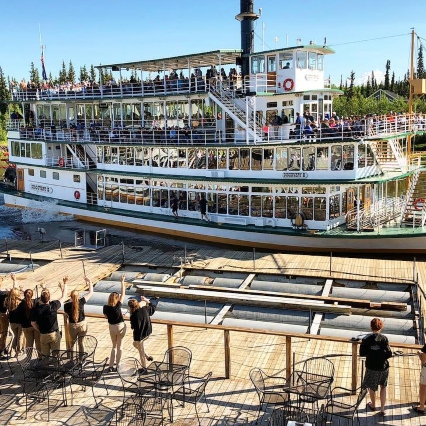A visit to Yosemite National Park
This stunning park invites visitors to be amazed

In 1903, US President Theodore Roosevelt and John Muir, a naturalist born in Scotland, sat down in the forest and discussed preservation. Muir was insistent on protecting the vast wilderness that lay before them. Today, as a result of that conversation, more than 3.7 million people have visited Yosemite National Park and the Sierra National Forest which surrounds it. As snowbirds prepare to head south for the winter, they will find that a few days spent exploring this area will be worth the slight diversion from their planned route. We certainly did when we visited in mid-October, and since it is still “summer time” in east central California, driving to this fabulous place is still possible.
Yosemite National Park has a number of attractions: rocks and glaciers, waterfalls and rivers, canyons, wildlife, plants and recreational activities.
Geology, Rocks and Glaciers
Over ten million years ago, the Sierra Nevada Mountains were uplifted and tilted which resulted in steeper streams and river beds. This uplifting created deep, narrow canyons and granite cliffs that shoot straight up. El Capitan is the challenge most sought by the rock climbers who come here, as there are many routes to the top and they are accessible all year long. Further away, Mount Lyell rises to 13,114 feet (3,997 metres) and is the tallest peak in the park. Half Dome, North Dome and Glacier Point are also spectacular sights. Glaciers—which were formed only one million years ago and consist of an estimated 4,000 feet of ice—cause glacial movement that has resulted in the U-shaped valleys we see today.
Waterfalls and Rivers
Bridalveil Falls flows from a hanging valley and its U shape allows a great volume of water to fall. As water cascades over the rock, moving this way and that depending on the wind, it truly looks like a bride’s veil. This is a very popular spot because the falls are visible from many locations in the parking lot and it is a short walk to the viewpoint. Yosemite Falls, at 2,425 feet (739 metres), is the highest waterfall in North America. It can be seen from the road but is so far away that only a good camera with a zoom lens can do it justice. Yosemite is noted for its high concentration of waterfalls in a small area. As for rivers, there are two main ones, the Merced and the Tuolumne Rivers. Both have been designated as wild and scenic rivers by the National Wild and Scenic Rivers System, originate in the park and eventually flow into the central valley of California. In all, there are 1,600 miles (488 metres) of ponds and streams.
Canyons
Canyons are plentiful, having been formed by glacial movement, and most visitors make a point of going to see them. Yosemite Valley appears right after you pass through a large tunnel (Tunnel View), and attracts many visitors. Cameras are everywhere to be seen here. Caution: the height of this rock-carved tunnel is 13’2” at the curb, but many large, high profile tour buses passed through without difficulty. Hetch Hetchy Valley is another spectacular canyon.
Wildlife and plant life
The most fascinating animal found in the park is the black bear. Charming, to be sure, but also troublesome when fed by humans, whether deliberately or not. By late September, there were more than 450 incidents involving these critters, with almost US$100,000 damage. Moral of this story: Do not feed the bears! Mule deer are also found here, but do not cause as much damage. For the amateur botanist or plant lover, the five types of vegetation zones make Yosemite a special type of nursery. There are more than 1,500 different types of rare plants to be found here.
Wilderness Areas
Although Yosemite Valley receives the most visitors, 95 per cent of the park is designated as “wilderness.” Wilderness visitors come to explore the solitude, peace and magnificent beauty of the unexplored. With over 800 miles (1,300 kilometres) of hiking trails, there are countless paths to follow in the search for tranquillity.
Recreational Activities
Horseback rides are available at a stable just outside the park, as is a steam-operated jenny originally used to haul logs from the forest (the Yosemite Sugar Pine Railroad). Today it hauls people, taking them back into another time. At the Curry Campground, you can also rent a bike and see the sights from a different perspective.
OK, this sounds very interesting, but can I take my RV into the park? Coming from the south, the elevation at Oakhurst (14 miles from the park), is less than 1,000 feet. From there it is all windy and curvy uphill roads, eventually reaching over 6,000 feet. Owners of big rigs may want to check into Whispering Pines RV Park on Co. Road 222 in Bass Lake, or the first campground inside the park—Winona Campground—with an elevation of 4,000 feet (1,219 metres). Either way, your tow vehicle or dingy is a good way of getting around. Better still, drive your tow vehicle or dingy to the Winona Hotel and climb aboard a free shuttle bus and leave the driving to someone else. Winona Village offers meals, golf, a library and fuel. For those with smaller rigs, there are campgrounds within the park with registration at Curry Village, but all of these are basic sites (water and a dump station only).
Finally, there are some things all visitors to Yosemite National Park should know:
- There is an entrance fee of US$20 per vehicle.
- There is a campground fee of US$20 per site.
- CA 140 is restricted to vehicles under 45 feet in length. Unfortunately, this is the northern entrance route. CA 41, further to the south, has no restrictions but is undergoing road work, causing minor delays.
- Information about conditions in the park can be obtained by calling 209-372-0200, or visiting the park website.








